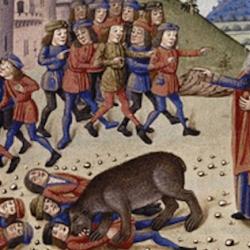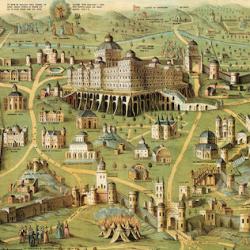The NASB translates 1 Kings 8:9 as follows: “There was nothing in the ark except the two tablets of stone which Moses put there at Horeb, where the Lord made a covenant with the sons of Israel, when they came out of the land of Egypt.” The Hebrew, however, does not use the word BERIT (covenant). A literal translation of the middle section of the verse would be: “the two tablets of stone which Moses caused to rest there in Horeb, which Yahweh cut with the sons of Israel.” Let me call attention to three details:
1) The word translated as “place” is the hifil of “Noach,” the word behind the name of Noah, and a word used several times in the Solomon narratives. Yahweh gives rest to Israel (5:4), and Solomon caused the bronze items to rest in the temple (7:47; see the earlier post on Solomon as creator). The ark-throne is the place of Yahweh’s rest, and also the place where the tablets of the Torah rest.
2) The word “tablet” is used in 7:36 to describe some feature of the bronze water chariots that were made for the temple. It is the same word used throughout the Hebrew Bible for the tablets of the 10 words. The water chariots are not only taking life-giving water to the world, but life-giving word. Not surprisingly, they are decorated with cherubim, just as the ark is. Solomon’s water chariots symbolize the law that will someday flow from Zion to the nations (Is 2).
3) As noted above, the word “covenant” does not appear in the Hebrew text. Instead, the verb “cut” (KARAT), often associated with the making of covenants, is used in connection with the stone tablets. (This is not the word used in Exodus to describe God “inscribing” the Ten Words on the tablets.) The tablets, not the covenant, is “cut” in this passage, but the cutting of stones is the cutting of a covenant.














